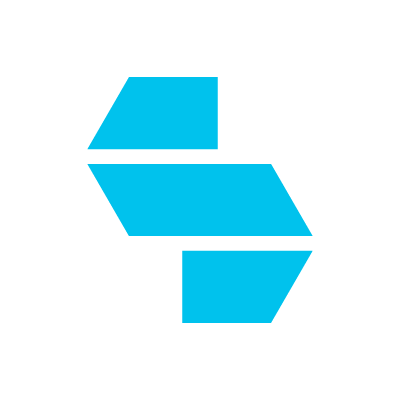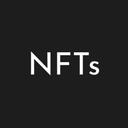

Guest:
Arvinc, Tech Operation of dotbit@arvinatwild
Wei Duan, Community Manager of Next.ID@BinaryHB
Kai, Founder of MCG@Kai_Manifold
Thomas Yu,Co-Founder of KNN3@wenqingyu
Host:
Anita, Global Market Manager of KNN3@knn3network
Q1:What’s your idea about Web3 social? You may share your definition of that.
Wei Duan@BinaryHB:
I think web3 social is probably the same as web2, the social things we are doing here like chatting with people and logging in to websites such as facebook or twitter, such places still exist.
People are more anonymous but people have more data and images on chains. In the past, the data was all controlled by a certain group. The source of data has changed as well, it is not owned by a certain group, and while the product solution does not change, the need for product development never changes.
Arinvc@arvinatwild:
There is no big difference between Web2 and Web3 social, but web3 social has great potential, because such a little thing can bring people together to interact openly on the same thing.
Kai@Kai_Manifold:
At least right now, I didn’t see things change from the way humans behave, so we’re still on the way.
Thomas@wenqingyu:
Social has been fundamentally defined way back to the innovation of companies like Facebook or Twitter, and those digital back in business. So today, when we are talking about Web3 social, I think it faded in a very ambiguous scope and definition. That’s why I have the same feeling as Kai, that we cannot say which feature or which product is actually Web3 native.
But you can still tell the difference between Web2 and Web3, or Web2er and Web3er. Those differences are mainly rooted in how we value and how we utilize data. For example, the most common topic about that is data sovereignty. Besides, the transparency and control of what you can see and what you will see, which is one of the value propositions why Elon Musk was acquiring Twitter.
Additionally, we also talk about the ultimate control of your social status. In Web3, we regard your social status and social behaviors accumulated as your historical data as types of social assets. In Web2, your social assets may not be your own properties because one day Facebook or Twitter can have the authority to delete your account and all of your assets will be gone. This is more like you are storing your value in a bank. But today, we are diving into the authentic value of data.
Q2:How does Web3 social network impact user profiling?Please elaborate with specific cases.
Wei Duan@BinaryHB:
Let’s take DeFi as an example, we will analyze multiple users and package them together with on-chain behaviors. Like, how much money is borrowed or to check if users are affordable to buy it or not.
Arinvc@arvinatwild:
Web3 can link all interactions together within applications in one wallet address, which enables applications to be better at user profiling. More data and subscriptions of user interactions can be retrieved to analyze the address behavior to have deeper insights and understanding, and interactions between the wallet address. That kind of flexibility is what we are not able to conduct in the Web2 world.
Kai@Kai_Manifold:
For user profiling, we need to do 2 things before everything happens:
- We need data aggregations for users which means users own the data and data can be aggregated together.
- We need data algorithms to analyze data. Unlike the web2 case, all the data is isolated in different companies, in Web3 it’s all public data.
I think dotbit and Next.ID are the current best solutions for user profiling from different angles. Such data aggregation can be extended to different applications in the future.
Besides, what KNN3 is doing right now is that, when the data has some structures and scopes, it is great to have algorithms, such as recommendation methods and analysis tools to help other people to utilize data.
Thomas@wenqingyu:
User profiling is the way we describe or evaluate a Web3 personality that you value. Way back in Web2, user profiling was heavily used to define a targeted user. In the traditional social app, we help the application find the right person to receive the advertisement, as well as recommendations to reach out to new friends with mutual interests. But I think in web3, user profiling can be something additional one step further because, in web3, we have the capability to verify data. For instance, if you have some historical actions taking place on the blockchain, the verifiable data, which means 1) the cost to fake it is high 2) the value backed is much bigger than in web2. Within better aggregation and algorithms to have a better description of who we are.
On top of that, KNN3 is rolling out a set of data solutions and algorithm solution models to help application developers to better find the exact targeted user in their building application modules.
Q3:What are the major challenges of the current Web3 social system, such as impacts on digital marketing or customer acquisition? How does your project handle these problems?
Wei Duan@BinaryHB:
I would say the answer to that is the maturity of aggregation methodology like how we define a user, our understanding of the user as a simple public address, how we connect the address to all behaviors, and anonymous behaviors the user has online.
The concept of Next.ID avatar is a public-private keeper to represent yourself. We have connected all your avatars between Web2 IDs like Twitter and Facebook accounts and Web3 IDs such as domains like ENS and dotbit. We believe in the far future, users can have ultimate anonymousness to construct a trustless internet.
Arinvc@arvinatwild:
We’re missing some fundamental applications in the current web3 social system:
1)DID system — where dotbit is working on;
2)social graph & social applications
There are many web2 developers coming to web3 that use the traditional web2 knowledge to build web3 world, which I think is not proper. Because Web3 users have distinctive value propositions from Web2 such as KYC, and how to protect your data privacy, etc. Those missing parts have a great impact on digital marketing and customer acquisition. In web3, you cannot use the traditional method like inviting friends to gain benefits, on the contrary, you have to set up a wonderful branding for your product or set up a solid Discord community.
For customer acquisition, I think community plays a critical role, that’s what dotbit is trying to keep in mind in our product building. We think all of our customers are generated or come from our community members. In this most decentralized world, you need to have continuous conversations with your community.
Kai@Kai_Manifold:
As a investor, I may summarize in 2 sectors:
- How to co-exist or challenge the traditional web2 social giants? I think that is always the question. For this question, I think the parent company of Next.ID — Masknetwork gives a good answer. Instead of competing with the giant directly, they stand on the shoulders of the giants and try to immigrate all the users from web2 to web3.
- What will be the so-called web3 social network to change the world? How will it transform the paradigm shift compared to the traditional one? Sometimes we need more specific business models to address that.
Thomas@wenqingyu:
Starting from the first challenge that KNN3 is diving into — Currently, we have very valuable verifiable data spread on different blockchains and platforms, those data can be treasures but they are now unstructured. Yet, platforms are not talking with each other, consequently, the urgent step is about data aggregation.
Something else KNN3 is doing right now is that we are doing the heavy ETL process services to decode behaviors data on different blockchains such as Ethereum, Polygon, and BNB chain as well as indexation.
The second challenge is that once all of the data is collected in a huge data warehouse, what can we do with it? Definitely, we can run some interactive applications on top of that, such as a graph layer where Next.ID is doing right now. Except that, is it possible that we can use the same data warehouse to run a heavy computation to save the machine learning algorithm? You may have some solutions but not in an effective way, thus this is another aspect where KNN3 is making efforts. A hybrid, transactional and analytical process container is in demand so that we can run different types of machine learning within the existing data from multi-blockchains.
The third thing is our application is not smart enough to talk to each other. The expansion of composability is underneath, there is still at least 80% of the potential that hasn’t been released. This is what KNN3 is working on as well.
Q4:What kind of product paradigm developments or new features in the Web3 social market do we expect to see in the coming months to years?
Wei Duan@BinaryHB
I’m expecting products based on NFTs. For example, myself is a movie goer. Currently, I haven’t seen a team who is working on such a creativity sector to connect their fans behind the behaviors regarding the movies watched. Loads of incentive NFTs are in the market, but rarely direct benefits to users.
Arinvc@arvinatwild:
One thing that I’m sure of is that the role of community is underestimated right now. The community will have a much more powerful and influential impact on product building. Many products have established their DAOs to vote on features to be released in the future and provide useful feedback around.
Kai@Kai_Manifold:
The answer to the question is simple: I don’t know the answer. If I do know it, I will definitely do it. But if this happens, I think most likely it is because of the deep understanding of the whole industry, especially on the social network side.
Thomas@wenqingyu:
I don’t have a specific answer for that, I’m looking forward to new products coming out to help us as individuals to build our visual personalities on web3. In web2, we build our social status for business purposes or to spread our influence. However, in web3, it is our first-ever time building something on our own, instead of business goals. So, I’m looking forward to some tools to assist in managing your social assets, social activities and how we evaluate them on web3 platforms.
Q5:Recently, the social network landscape experienced plenty of changes, such as Twitter being acquired by Elon Musk, the popularity of microblogging platform called Mastodon and user immigration to Lenster. What’s your view of the phenomenon?
Wei Duan@BinaryHB:
Well, I think that Elon Musk is trying to transfer the centralized platform to a so-called protocol, which I regard as a good direction. But I believe the whole team has been experiencing a tough time.
Plus, I’ve tried Mastodon, an interesting product, more like Wikipedi, and is sustained by donations from users instead of a profitable platform. And you can host your own server, like what Next.ID is doing now, to set up consensus aligning with bonding people together in common interests. I’m happy both of the products are trying to do that.
Arinvc@arvinatwild:
Twitter is like a newspaper for the web3 world, after being acquired by Elon Musk which means Twitter could be a more centralized platform and there will be more microblogging in the future. It’s unavoidable.
Kai@Kai_Manifold:
Just think about Facebook in the industry, there are still lots of chances and a bright future for the crypto industry. Don’t be frightened by the incidents, the industry is in the progress of growth.
Thomas@wenqingyu:
- The Twitter acquisition brought a very hot topic around anti-censorship and freedom of speech. Maybe privatizing Twitter can be a further step, but I don’t think that would be the final solution for Twitter as an ultimate town hall. At least less commercial and political influence will be directly affected by Twitter for giving a current corporate structure. Meanwhile, from my point of view, I think Mastodon and Lenster will have the potential for anti-censorship and freedom of speech.
- The opposite side of freedom of speech is how we hold accountability for what information we receive. Every day, lots of unfiltered information creeps into Twitter, even causing bad consequences. I think Twitter right now is improved by moderation mechanisms like charging 8 dollars per month then you can get a premium moderation level. But in Mastodon, you can speak almost everything, it’s more like a neutral filter transparency, everything you see and related to your account can be traced back. Else, on Lenster, I regard they are building a trait-based profile or a credit-based social system to hold the accountability. Perhaps you are not always saying things right, but if you’re saying things thoughtfully at least you are not a fraud or lying to the public.
- What we can see and reach out on the social network should not be dictated by the corporate algorithm running in a black box. In this manner, I don’t think Twitter would be the best place to address that, but Mastodon and Lenster. Their protocol is fully open and transparent. Community and users are able to audit to ensure what you’re delivering is what you’re committed to delivering. That’s very important to maintain a healthy algorithm ecosystem in the social network.






































【免责声明】市场有风险,投资需谨慎。本文不构成投资建议,用户应考虑本文中的任何意见、观点或结论是否符合其特定状况。据此投资,责任自负。
推荐专栏











